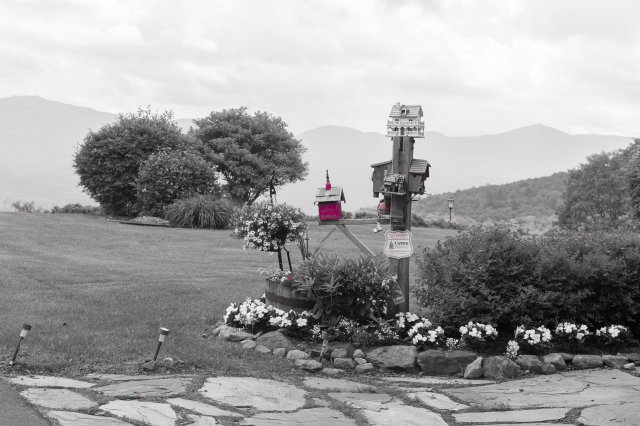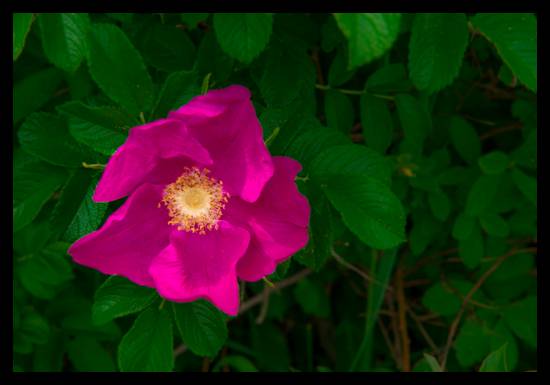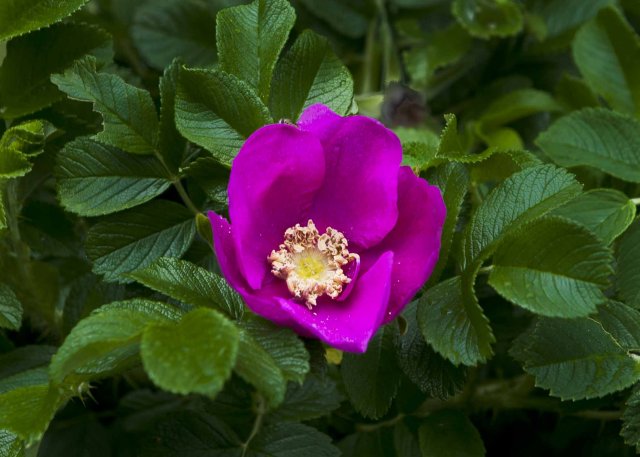
Set 2 of My
Favorite Wild Roses Photographs
Bob Jensen at
Trinity University
This file will feature our wild roses with some pictures taken by Wes Lavin and
some taken by me.
Our wild roses are in a long hedge in our front lawn
I begin with Wes Lavin's June 2015 photographs of our front law




Here are some of my photographs of our rose hedge
These were taken in various years




The wild roses look bleak in the winter

Here are some more professional closeups taken by Wes Lavin



In late July the wild rose blossoms give way to red things that look like small
apples
These are known as "rose hips" that can be used in flavorings such as rose hip
teas
Rose Hip --- https://en.wikipedia.org/wiki/Rose_hip
The rose hip, also known as rose haw or rose hep, is the fruit of the rose plant, that typically is red-to-orange, but ranges from dark purple to black in some species. Rose hips begin to form after successful pollination of flowers in spring or early summer, and ripen in late summer through autumn.
. . .
Rose hips are used for herbal teas, jam, jelly, syrup, rose hip soup, beverages, pies, bread, wine, and marmalade. They can also be eaten raw, like a berry, if care is used to avoid the hairs inside the fruit.
A few rose species are sometimes grown for the ornamental value of their hips, such as Rosa moyesii, which has prominent large red bottle-shaped fruits.
Rose hips are commonly used as a herbal tea, often blended with hibiscus, and also as an oil. They can also be used to make jam, jelly, marmalade, and rose hip wine. Rose hip soup, "nyponsoppa", is especially popular in Sweden. Rhodomel, a type of mead, is made with rose hips.
Rose hips can be used to make palinka, a traditional Hungarian alcoholic beverage, popular in Hungary, Romania, and other countries sharing Austro-Hungarian history. Rose hips are also the central ingredient of cockta, the fruity-tasting national soft drink of Slovenia.
The fine hairs found inside rose hips are used as itching powder.[1] Dried rose hips are also sold for primitive crafts and home fragrance purposes. Nutrients and phytochemicals
Rose hips are particularly high in vitamin C content, one of the richest plant sources available. However, RP-HPLC assays of fresh rose hips and several commercially available products revealed a wide range of L-ascorbic acid content, ranging from 0.03 to 1.3%.[2] Rose hips of some species, especially Rosa canina (dog rose) and R. majalis, have been used as a source of vitamin C. During World War II, the people of Britain were encouraged through letters to The Times newspaper, articles in the British Medical Journal, and pamphlets produced by Claire Loewenfeld, a dietitian working for Great Ormond Street Hospital for Sick Children, to gather wild-grown rose hips to make a vitamin C syrup for children. This advice arose because German submarines were sinking commercial ships, making it difficult to import citrus fruits.
Rose hips contain the carotenoids, beta-carotene, lutein, zeaxanthin and lycopene, which are under basic research for a variety of potential biological roles, such as inhibiting oxidation of low density lipoprotein.[3][4]
A meta-analysis of human studies examining the potential for rose hip extracts to reduce arthritis pain concluded there was a small effect requiring further analysis of safety and efficacy in clinical trials.[5] It is not considered an appropriate treatment for knee osteoarthritis.[6]
Continued in article
This is Erika in front of the wild roses

Set 01 of
Bob Jensen's Wild Rose Photographs ---
http://www.trinity.edu/rjensen/tidbits/Roses/Wild/Set01/WildRosesSet01.htm
Also see ---
http://www.trinity.edu/rjensen/tidbits/2009/tidbits090807.htm
More of Bob Jensen's Pictures and
Stories
http://www.trinity.edu/rjensen/Pictures.htm
On May 14,
2006 I retired from
Trinity University after a long and
wonderful career as an accounting professor in four universities. I was
generously granted "Emeritus" status by the Trustees of Trinity University. My
wife and I now live in a cottage in the White Mountains of New Hampshire ---
http://www.trinity.edu/rjensen/NHcottage/NHcottage.htm
Bob
Jensen's Blogs ---
http://www.trinity.edu/rjensen/JensenBlogs.htm
Current and past editions of my newsletter called New
Bookmarks ---
http://www.trinity.edu/rjensen/bookurl.htm
Current and past editions of my newsletter called
Tidbits ---
http://www.trinity.edu/rjensen/TidbitsDirectory.htm
Current and past editions of my newsletter called
Fraud Updates ---
http://www.trinity.edu/rjensen/FraudUpdates.htm
Bob Jensen's past presentations and lectures
---
http://www.trinity.edu/rjensen/resume.htm#Presentations
Our
address is 190 Sunset Hill Road, Sugar Hill, New Hampshire
Our cottage was known as the Brayton Cottage in the early 1900s
Sunset Hill is a ridge overlooking with
New Hampshire's White Mountains to the East
and Vermont's
Green Mountains to the West
Bob Jensen's Threads --- http://www.trinity.edu/rjensen/threads.htm
Bob Jensen's Home Page --- http://www.trinity.edu/rjensen/